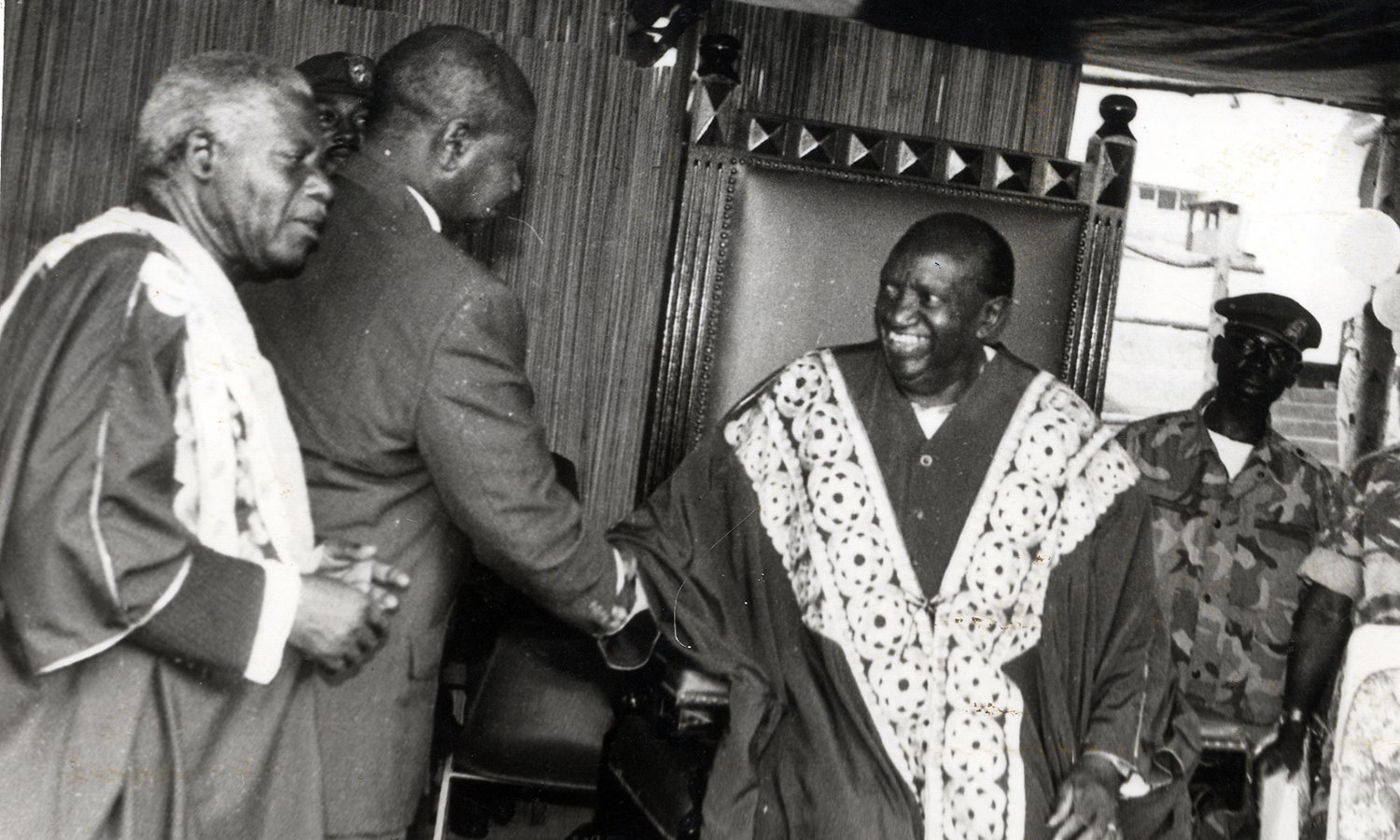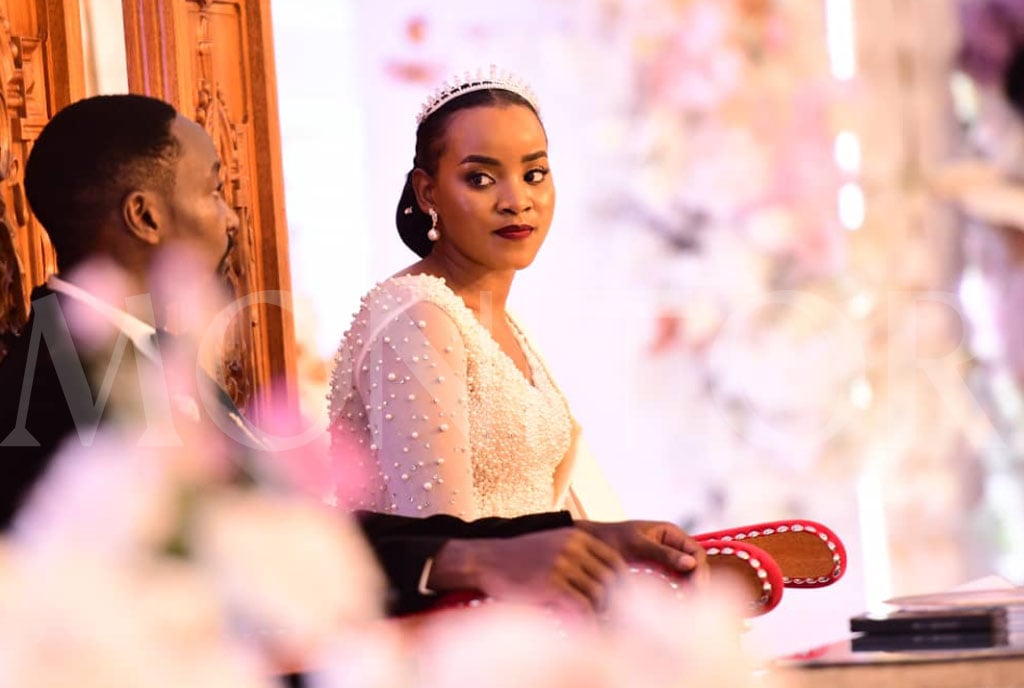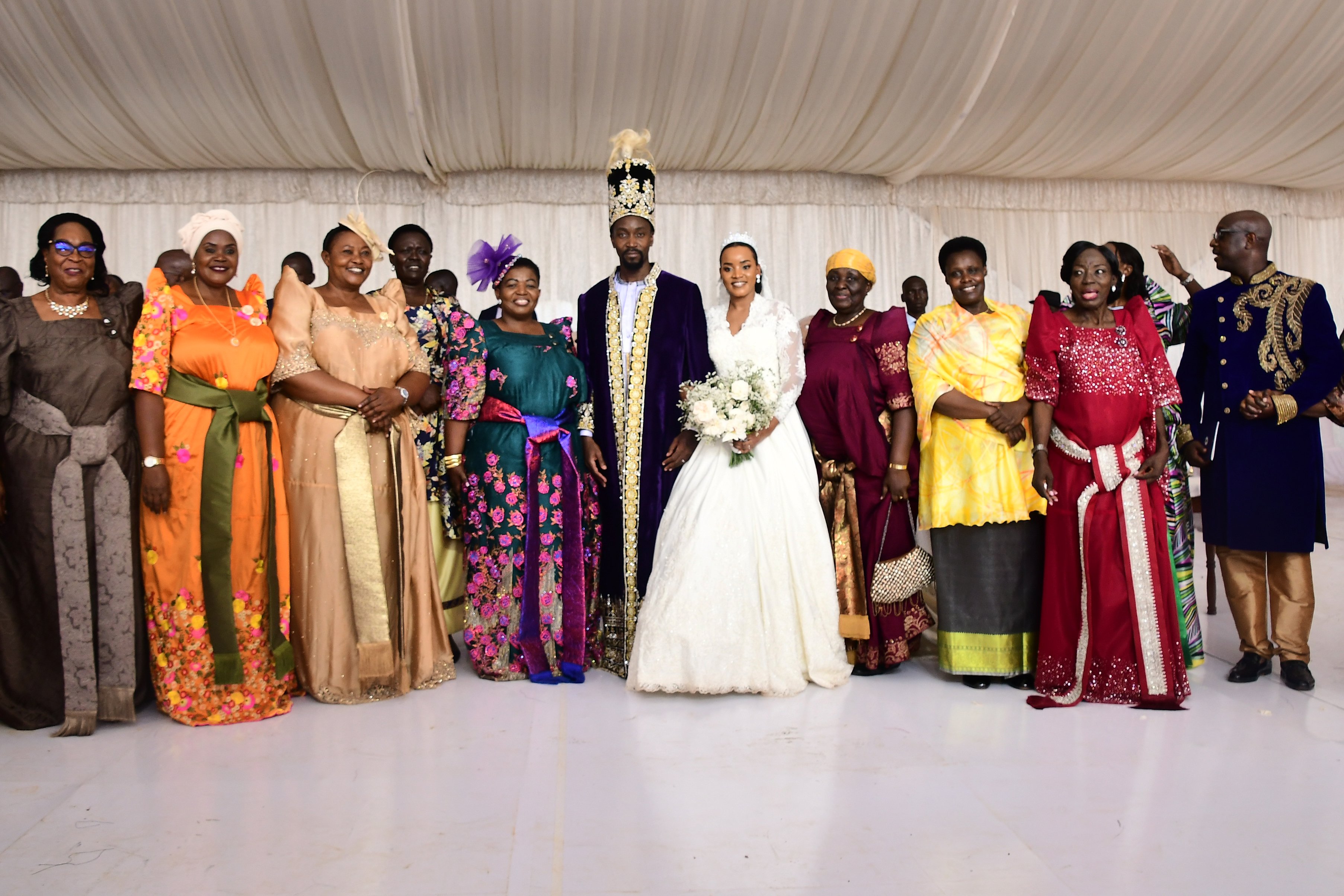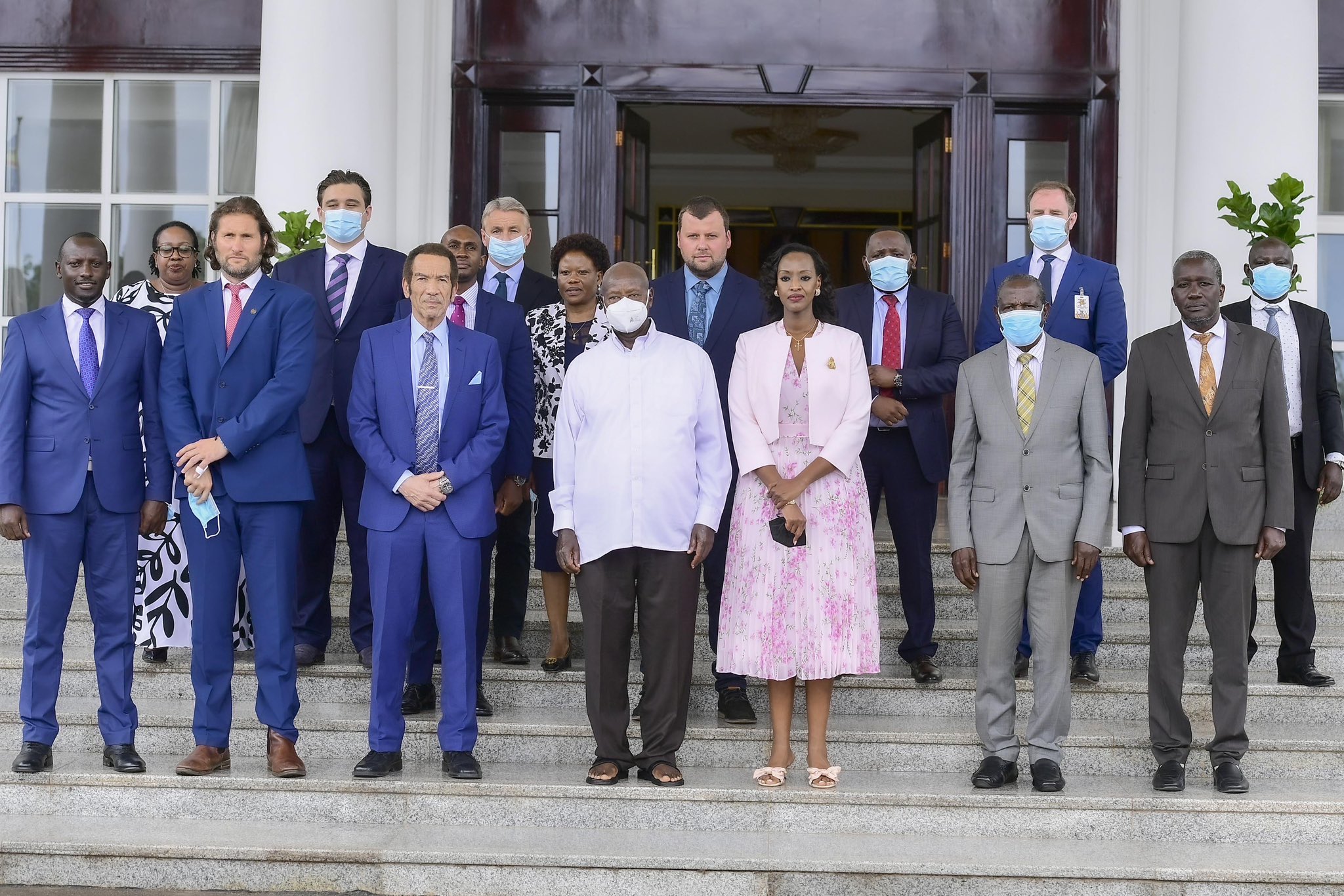Prime
Muloki installed as Kyabazinga of Busoga

President Museveni (centre) congratulates Kyabazinga Muloki (right) upon his coronation as new king of Busoga on February 11, 1996. PHOTOS/ FILE
What you need to know:
- With the Kabaka’s coronation out of the way, it appeared that Busoga was ready to have its go, but there was one small challenge. Prince Eriakesi Ngobi Kiregeya, son of Chief Obodha, the late traditional hereditary chief of Kigulu, wanted the seat for himself.
Twenty eight years ago last Sunday, Henry Wako Muloki was installed as the Isebantu Kyabazinga of Busoga.
The function that was held at the Busoga Kingdom’s headquarters in Bugembe was presided over by President Museveni and then vice president Speciosa Wandira Kazibwe.
Road to installation
The journey of the ascent to the throne, which he had first occupied in the 1950s, had started as far back as July 1991 when the Busoga Lukiiko (parliament) and the Royal Chiefs’ Council convened and elected him as the Isebantu Kyabazinga.
The installation could, however, not take place because there was no legal mechanism to facilitate it.
Things, however, changed for the better on April 3, 1992, when the Army Council of the National Resistance Army (NRA) passed a resolution, albeit amid objections from officers such as the late Col Serwanga Lwanga, making no objections to discussions with concerned groups that were keen on a return to them of their traditional and cultural sites and ruler for as long as it did “not interfere with the security of the country”.
Debate in NRC
On April 30, 1993, the NRC sitting as a political organ under the chairmanship of President Museveni directed the government to take all steps necessary to “return certain assets and properties previously confiscated by the State” following the Obote I government’s abolition of traditional rule and return them to the respective kingdoms.
Traditional rulers affected by the Bill were the rulers of the kingdoms of Buganda, Tooro, Bunyoro, Ankole and the territory of Busoga.
Then on the afternoon of July 8, 1993, Mr Abubaker Kakyama Mayanja, then minister for Justice and Attorney General, tabled the Constitutional Amendment Bill, 1993, to be read by the National Resistance Council (NRC) for the second time.
“The object of the Bill, Mr chairman, is to amend the Constitution in order to cancel the abolition by the existing Article 118 of the Constitution of traditional rulers which was done in 1967 and it removed all existing legal barriers to the return to traditional rulers of assets and properties which were seized from them when the institution of traditional leaders was abolished,” Mr Mayanja told the NRC presided over by the vice chairman, Moses Kigongo.
Mr William Kiwagama, then NRC Member for Bunya County, then a part of Iganga District, was the first to support the Bill. Kiwagama was years later to serve as Kyabazinga Muloki’s second Katukiro (prime minister).
Others who supported the Bill were Capt Gad Gasatura (Rushenyi County, Bushenyi), Mbura Muhindo (Busongora County, Kasese), Marwas Paulino (Dodoth County, Kotido), Dr Higiro Semajjege (Lwemiyaga, Masaka), Brig Matayo Kyaligonza (Historical) and Ms Joyce Mpanga (Mubende Woman Representative).

Kyabazinga Henry Wako Muloki is crowned by then Archbishop of Uganda, Mpalanyi Nkoyoyo, on February 11, 1996, at Bugembe, Jinja.
Enthronements
That paved the way for the proclamation on July 24, 1993, of Kaboyo Olimi III as the Omukama of Tooro. Omukama Kaboyo Olimi III had been deposed on the abolition of kingdoms in 1967.
That was followed by the coronation of Kabaka Ronald Muwenda Mutebi II on July 31, 1993. Bunyoro-Kitara followed suit. Omukama Solomon Gafabusa Iguru was coroneted on June 11, 1994.
Busoga’s challenge
With the Kabaka’s coronation out of the way, it appeared that Busoga was ready to have its go, but there was one small challenge, Prince Eriakesi Ngobi Kiregeya, son of Chief Obodha, the late traditional hereditary chief of Kigulu, wanted the seat for himself.
Kiregeya had the backing of NRM historical Ali Kirunda Kivejinja. That polarised the Busoga political class into two. Muloki had the backing of Dr Kazibwe and Ms Rebecca Kadaga, who was at the time fast emerging as a power house in the region.
Whereas little is known about the role that President Museveni played in bringing the two parties to the table, it is generally known that it was thanks to him that Kivejinja and Kiregeya backed down, paving the way for Muloki’s installation.
On the day of Muloki’s installation, Kiregeya arrived in Bugembe and promptly unveiled royal robes similar to the one that Muloki was draped in. Nobody ever established what that gesture was meant to achieve.
President Museveni donated a Mitusbishi Pajero to the Kyabazinga. Mr Museveni drew wild cheers when he described the vehicle as “a shoe” to enable Muloki traverse his kingdom.
Quest for unity
As the division of the Anglican Church faithful into what were then known as the anti and pro-Bishop Cyprian Bamwoze factions showed, the region was at the time in serious need for a unifier.
A copy of an 11-page memorandum that then prime minister, Keith DB Mutengu, presented to President Museveni on July 25, 1993, captured that need.
“There is need to exploit a faithful capacity and voluntary will to unite ourselves under a recognisable, acceptable and progressive social-cultural leadership. Short of this we are first turning into a mediocre, or even substandard, ethnic community that could easily and inevitably be relegated to the lowest rungs of national leadership,” the leaders noted.
“Poverty has become the staple way of life in most rural parts of Busoga. In real terms, neither do the Basoga living in town enjoy comparable success and affluence like the members of other communities,” they further wrote.
Muloki’s speech
Muloki’s maiden speech promised a speedy revival of the kingdom’s fortunes based on a six point speech named after the six vowels - “a, e, i, o, and u”.
Focus, he said, would be on agriculture, education, industry, organisation and unity.
Muloki would then go on to preside over Busoga, which is made up of 11 hereditary chiefdoms – Bugabula, Bulamogi, Kigulu, Luuka, Bukono, Busiki, Bugweri, Bukooli, Bunya, Bunyole and Butembe – each with their own chiefs, until September 1, 2008, when he passed on aged 87.
Seven different prime ministers served under him. That include Mr Keith Mutengu, William Kiwagama, Alfred Mugoda, Mr Daniel Batuwa, Martin Musumba, Prof Juma Wasswa Balunywa and Mr Wilson Muwereza. Kiwagama, Mugoda and Musumba have since passed on.




